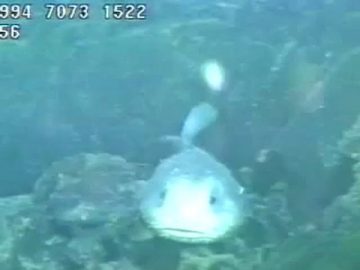Beauty is in the eye of the beholder? It also depends on what the pressure is!
The “blobfish” (Psychrolutes marcidus) is a distant relative of BC’s own rockfishes and, with apologies to Jimmy Durante who shared a similarly prominent proboscis with this fish, the blobfish was recently voted the world’s “ugliest” animal by The Ugly Animals Preservation Society (UAPS).

When it is taken out of the water, a blobfish looks like, umm, a blob. Photo credit: Smithsonian.com
Trouble is, at a depth of at least 600 metres where this fish normally lives, it looks, well, quite “normal”. This fish copes with such intense pressure by not having a bony internal skeleton, or a “gas” bladder, and having soft “rubbery” skin. Such adaptations prevent the fish’s internal organs or skeleton from being crushed by extreme pressure at depth.

A blobfish looking like itself — a fish — when it swims in its natural habitat. Photo credit: Dailymotion at PopScreen.com
It is only when dredged-up by humans and observed at “extreme” lack of pressure conditions (at sea level) that the animal becomes distorted and looks, err, a bit odd (with apologies to UAPS – no fish is ever “ugly”!).
Amazing. Read more amazing information on blobfish at the Smithsonian Institution blog or watch a videoclip at PopScreen.com (note: video will run after a short ad). Check out more amazingly extreme adaptations at the Beaty Museum’s current “extremes” themed displays.
